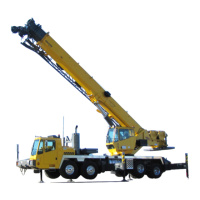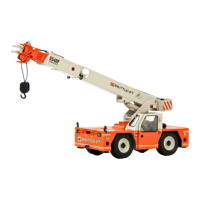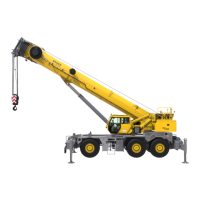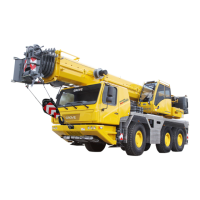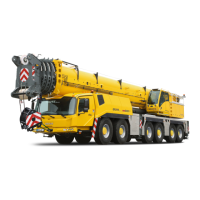4-25
TMS9000-2 OPERATOR MANUAL OPERATING PROCEDURES
Published 02-21-2019, Control # 611-05
Manual Transmission Clutch Operation
Clutch pedal
adjustment
(Figure 4-18) provides
for approximately 38.1
mm (1.5 in) for free
travel movement of the
pedal after the first free
travel of 12.7 mm (0.5
in) is passed before
engaging the release
bearing fully. It is
important that this free
travel be maintained to
avoid possible
excessive wear on the
bearing and/or clutch slippage. Approximately the last 25
mm (one inch) of downward clutch pedal travel engages the
clutch brake which overcomes the tendency of the clutch to
rotate at high speed when the clutch is disengaged. A slight
but definite resistance to clutch pedal downward movement
will be felt at the last 25 mm (one inch) of travel.
The clutch brake is particularly useful for initial gear
engagement in the lower gears when going uphill, when the
road speed drops off more quickly than the engine speed,
requiring rapid shifts. The clutch brake MUST NOT BE
USED when making a downshift.
Clutch engagement should always be made smoothly while
synchronizing accelerator movement necessary to move the
crane.
Double clutching is a means of bringing the speed of the
transmission gears into synchronization so the shift can be
made without clash. The engine is used to speed up the
countershaft for a downshift and to slow it down for an
upshift. Double clutching operation is accomplished as
follows.
1. Depress the clutch (do not engage clutch brake) and
shift into neutral.
2. Release clutch pedal and accelerate the engine (when
making downshift) or allow the engine to slow down
(when upshifting) until engine speed approximately
corresponds to road speed of the gear ratio selected.
3. Depress the clutch pedal (do not engage clutch brake)
and shift into gear.
4. Release the clutch pedal. Always use the double
clutching technique.
NOTE: Never allow your foot to ride the clutch pedal when
the clutch is engaged. This causes premature
release bearing failure and short clutch disc life.
Shifting Gears
Next to concern for safety, good shifting habits are probably
the most important capability a driver can have. Knowing
how and when to shift can return savings in trip time and
operating expense.
In the early stage of moving the crane, keep the engine
speed down to the actual power requirement but anticipate
the next shift demand and do not cause the engine to labor
with the next shift. Start the crane in the lowest gear
necessary and with the first few shifts, develop only the
engine speed (RPM) needed to get rolling. Then as you
upshift, increase crane speed in each gear with a
progressive increase in engine speed. It should seldom be
necessary to go to governed engine speed in the lower gears
except in a peak load situation, such as starting up a grade.
The biggest task when climbing a grade generally will be
maintaining a reasonable rate of speed. When possible,
preplan the climb and probable shift requirements according
to traffic conditions and grade to be climbed.
When approaching a hill, gradually move the throttle all the
way down, if necessary, to maintain governed engine speed
(RPM) and remain at full throttle as the crane starts up the
grade. If there is sufficient power to maintain satisfactory
road speed without the engine laboring, remain in that gear
SUB: Main Hoist Cable (843’ of K-
100 Rope)
-176.91 (-69.65) -401 (-884) 126 (278) -527 (-1162)
SUB: Aux Hoist Cable (604’ of K-100
Rope)
-271.91 (-107.05) -286 (-631) 138 (305) -425 (-936)
SUB: Automated Manual
Transmission
562.31 (221.38) 34 (75) 34 (75) 0 (0)
Axle Weight Distribution Table
CAUTION
Never fully depress the clutch pedal before the
transmission is put in neutral. If the clutch brake is applied
with the transmission still in gear, a reverse load will be put
on the gears making it difficult to get the transmission out
of gear. At the same time, it will have the effect of trying to
stop or decelerate the crane with the clutch brake, with
resultant rapid wear and generation of excessive heat,
necessitating frequent replacement of the brake friction
discs.

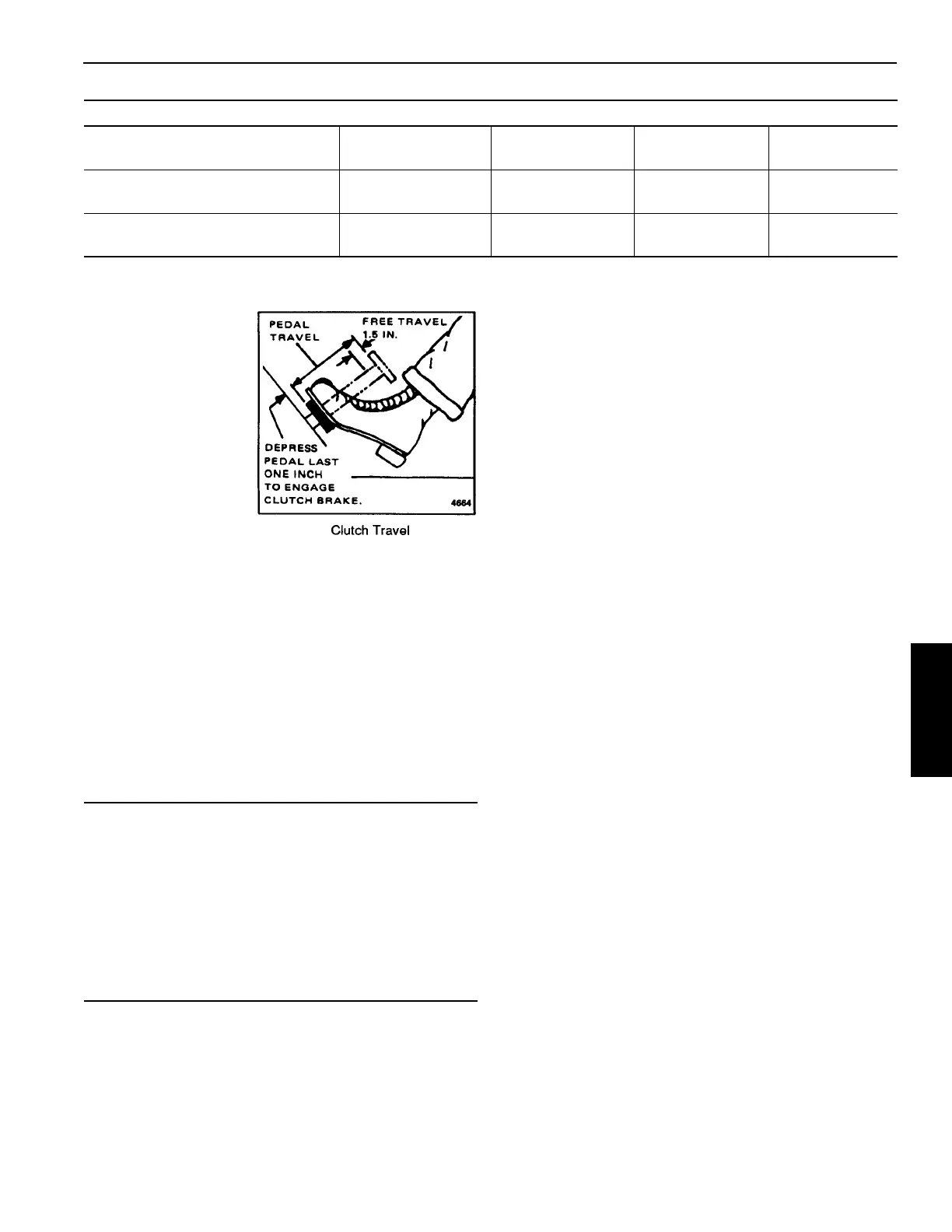